#signal hill: fletcher
Text

it's been a minute since the last signal hill update! if you're curious about the hood i recommend checking out the hood directory.
when editing the rest of round 3 i realized just how many babies were born or aged into toddlers, and how that's pretty much the only content i have for the rest of the round. so i decided to just compile them all so we can speed through.
here are some of the new babies of generation 2 - alex dunn (mikey & josie's son), adam fletcher (daniel's son), johnny armstrong (alien baby born to carter & tina), anya lee (born last round to bianca & nisha), and the larson kiddos, mars and his new baby sister kira (aj & markus' kids)
NOW we should be back on track, lmao. more screenshots from this round below the cut just so they exist somewhere, but i'm really ready to get to round 4.




dunn household, round 3 — josie and mikey shacked up last round, and now they have baby alex, who was a happy little accident.
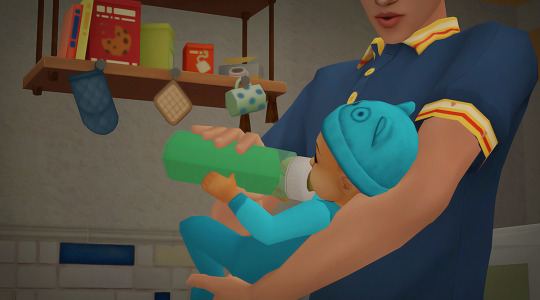
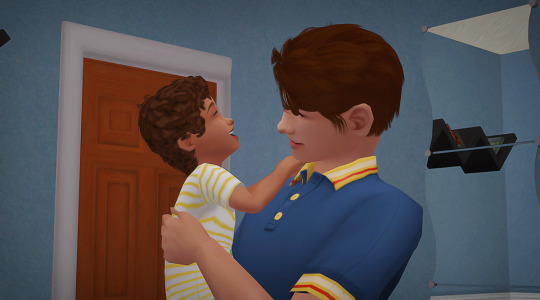
fletcher household, round 3 — i spent the entire round balancing around baby adam. arhan was at work 90% of the time, so daniel took on a lot of the caretaking duties.


lee household, round 3 — over at the lee household, we just have seth and anya being cute babies. i think seth aged up on the final day of the round but you'll see him in round 4!




armstrong household, round 3 — i really took zero screenshots of the armstrongs this round lol. carter got abducted again, almost immediately after johnny was born. this will be baby #3, for those keeping track.

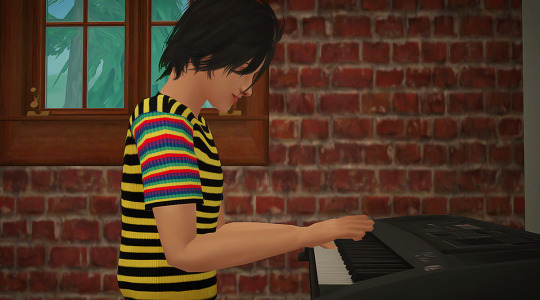
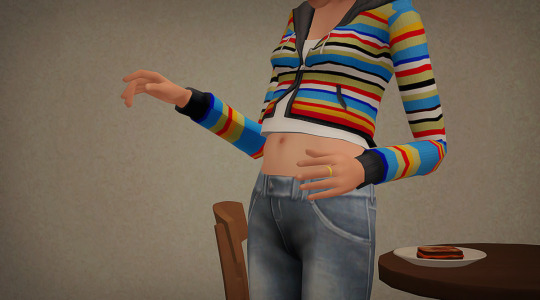


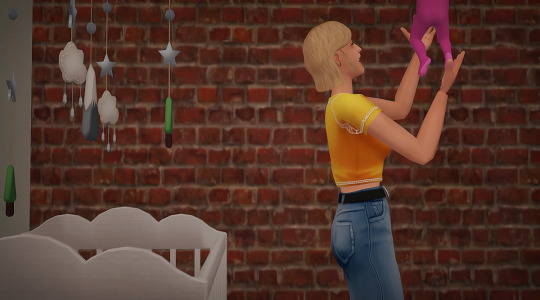
larson household, round 3 — aj and markus moved into a new house after mars was born, and found out aj was pregnant again shortly after moving in. the new house is a bit empty for now, but with mars aging up to a toddler, and baby kira arriving, it'll feel cramped soon enough.
and we're off to round 4! :)
#this saves me so much headache lmaooo#for reference i played this round like 9 months ago so it's been so long that i barely remember#simblr#ts2#the sims 2#sims 2#gameplay#hood: signal hill#signal hill 1.3#signal hill: dunn#signal hill: fletcher#signal hill: armstrong#signal hill: lee#signal hill: larson#signal hill: alex dunn#signal hill: adam fletcher#signal hill: johnny armstrong#signal hill: anya lee#signal hill: mars larson#signal hill: kira larson#GOD. OK. SO MANY TAGS.
39 notes
·
View notes
Text
Way Down the Hill
Part 4
Sofia gazed over the high dune as she waited for the signal. There were only a few people in the West that knew how to catch a devilish man like Arthur Moore off guard. From the stories that Tom had told, He had killed both Tom’s younger brother, and his own wife. From the stories that Tom had told, Mr. Moore would be just as bad as her past abductor.
George Harrison came to the West from England. He had come there to profit off of a sponsored dig sight east of the town she lived in. When George first came to live in her town. He was an outsider. As time went on, he started to make a name for himself as the local doctor. His practice was medicines from the other side of the world–Britain and some other places on the globe. It wasn’t long until Sofia had her own problem.
Her son had been sick for a year now, and she would give anything to make him better. After a short examination Dr. George said he would have a treatment ready in a few days. After a few, Sofia and her boy went to the Doctors new office. That’s when she felt a prick on her neck, her face hitting the street, and blacked out.
When she woke up locked in a cell, and saw that her son wasn’t with her. He had been strapped to a chair on the other side of the barred wall. Standing in the shadows behind him was George Harrison. He told Sofia what her son really had. A sickness that was impossible to cure in the West. Cancer, that is what her son had, but cancer was not what killed him.
George said that he was going to find a way to cure it. That he would be the first one to do it. For months he trapped them in that dungeon. Only ever feeding them so often, and always giving them some sort of white colored sand as food. It wasn’t long after when his experiments started. He would often take the boy's blood, and inject him with an unnatural looking liquid. It was too much. Sofia couldn't stand to see this stranger slowly killing her son. She felt her palms begin to heat the cold iron bars as she shook them. Slowly they started to twist to her force. Soon George Harris could feel the heat coming from Sofia’s cell. He saw her and smiled. One last needle went into her son’s neck, and she watched as he died. Any effort to save him then was gone.
As Sofia’s eyes gazed up at the body of her son, as she saw the room starting to fill with fire. The bars meted in her hands. The horrified face of George Harrison fell to the ground in fear, but horrified wasn’t good enough. Sofia turned to him, and walked through the melted prison bars. She was going to kill him. She was going to melt him. And that's what she did before she fled her hometown. She killed that man so that there would be nothing to send back to England.
There, the signal. Sofia watched as most of the guards posted at the town's borders started to move. It was time to play her part. She quickly marched down from the sand that she had been watching from, and she made her way to the center of Wrenpoint. There she found a small house belonging to none other than Arther Moore. Sofia stepped inside so she wouldn’t be seen, and as she did, it became obvious how this man was living.
Papers were scattered across every surface. Notes, letters, all describing some kind of trade that had happened only two weeks prior. It was obvious that Arthur had been deeply stressed. Through all of the scribbled nonsense, Sofia could make out one name. Fletcher. It was quick, and she didn’t have time to wonder. She grabbed the paper and put it into her back pocket. She wondered how Tom was handling himself as she started to focus. As she did, she could feel heat sprouting from her fingertips, and soon she could see fire growing from her palms. It was a simple plan. Leave nothing to chance.
3 notes
·
View notes
Text
BATWOMAN PLAYLIST: SEASON 1 (PART I)
Summary: This is a compilation of songs that can possibly summarize Kate and Sophie's thoughts and feelings throughout the season of the show about their relationship. All of these songs were compiled using the application Spotify Song Radio and the song “Blackout” by Freya Ridings in Episode 1 of Season 1 of Batwoman as its base.
1. Blackout - Freya Ridings
2. My Mistake - Gabrielle Aplin
3. Always - Isak Danielson
4. This Mountain - Faouzia
5. Glorious - Ella Henderson
6. If This is Love - Ruth B.
7. Someone To You - BANNERS
8. Chemicals - Dean Lewis
9. You Are The Reason - Calum Scott
10. shut up - Greyson Chance
11. Can I Be Him - James Arthur
12. Falling Apart - Michael Shulte
13. Got It In You (Acoustic) - BANNERS
14. I Will Spend My Whole Life Loving You - Imaginary Future & Kina Grannis
15. The Few Thing (with Charlotte Lawrence) - JP Saxe
16. Two - Sleeping At Last
17. Meant to Stay Hid - SYML
18. Carry You - Ruelle & Fleurie
19. Missed - Ella Henderson
20. October - Alessia Cara
21. Train Wreck - James Arthur
22. Poetry - Wrabel
23. Where Does the Good Go - Sleeping At Last
24. I Get to Love You - Ruelle
25. Yours - Ella Henderson
26. 7 Minutes - Dean Lewis
27. Take Me Home - Jess Glynne
28. If By Chance - Ruth B.
29. War of Hearts (Acoustic Version) - Ruelle
30. Castles - Freya Ridings
31. All I Want - Kodaline
32. Salvation - Gabrielle Aplin
33. Every Little Thing She Does Is Magic - Sleeping At Last
34. Alice - Jack Curley
35. Soldier - James TW
36. Bones - JC Stewart
37. River of Tears - Alessia Cara
38. Be Alright - Dean Lewis
39. Heartbeats - Aron Wright
40. Call Your Girlfriend - Clara Mae
41. If You Need Me - Julia Michaels
42. False Confidence - Noah Kahan
43. Dancing With Your Ghost - Sasha Sloan
44. You & Me - James TW
45. Old Friends - Jasmine Thompson
46. Turning Page - Sleeping At Last
47. The Village - Wrabel
48. Unspoken - Aaron Smith
49. Wide Eyed - Billy Lockett
50. Worst of You - Maisie Peters
51. Say Love - James TW
52. Grund genug - Madeline Juno
53. Favourite Ex - Maisie Peters
54. Is It Just Me? - Emily Burns
55. Older - Sasha Sloan
56. Little Things - Jessica Mauboy
57. The Best You Had - Nina Nesbitt
58. You Said You’d Grow Old With Me - Michael Schulte
59. The Other Side - Ruelle
60. You’re My Girl (Lost Recording #6) - Mark Diamond
61. Waking Up Slow (Piano Version) - Gabrielle Aplin
62. Eight - Sleeping At Last
63. I Believe You - FLETCHER
64. All This Love - JP Cooper
65. July - Noah Cyrus
66. La Di Da - Lennon Stella
67. Wish You Well (Acoustic) - Sigala & Becky Hill
68. Low - Greyson Chance
69. 5AM - Amber Run
70. Worst In Me - Julia Michaels
71. You Mean The World To Me - Freya Ridings
72. When You Love Someone - James TW
73. Blue Jeans - Sofia Karlberg
74. Not About Angels - Birdy
75. Need You Now (Acoustic) - Dean Lewis
76. Maps - Freya Ridings
77. Start of Time - Gabrielle Aplin
78. Deep End - Birdy
79. I Can’t Fall In Love Without You - Zara Larrsson
80. Losing Me - Gabrielle Aplin & JP Cooper
81. Lost Without You - Freya Ridings
82. Love Has No Limits - Fleurie
83. Mixed Signals – Ruth B.
84. If The World Was Ending (feat. Julia Michaels) – JP Saxe
85. What A Time (feat. Niall Horan) - Julia Michaels
86. Incredible - James TW
87. Like I’m Gonna Lose You – Jasmine Thompson
88. Everybody Loves You - Charlotte Lawrence
89. Unconditional - Freya Ridings
90. Thoughts - Sasha Sloan
91. Came Here For Love – Sigala & Ella Eyre
92. Superficial Love - Ruth B.
93. Best I’ll Ever Sing - Maisie Peters
94. When It Don’t Come Easy - Sleeping At Last
95. Break My Heart Right - James Bay
96. Already Gone - Sleeping At Last
97. Falling Like The Stars - James Arthur
98. I’m Like A Bird - Alessia Cara
99. Bad Dreams - Faouzia
100. Nervous (Acoustic) - Gavin James
2 notes
·
View notes
Text
Where did the practice of two minutes silence for the dead originate?
You will be surprised...
The practice of the Remembrance Day silence originates in Cape Town, South Africa, where there was a two-minute silence initiated by the daily firing of the noon day gun on Signal Hill for a full year from 14 May 1918 to 14 May 1919, known as the Two Minute Silent Pause of Remembrance.[1]
This was instituted by the then Cape Town Mayor, Sir Harry Hands, at the suggestion of councillor Robert Rutherford Brydone,[2][3][4][Note 1] on 14 May 1918, after receiving the news of the death of his son Reginald Hands by gassing on 20 April, adopting into public observance a gesture that had been practised sporadically in city churches since 1916.[5] The first trial observance endured for three minutes on 13 May, after which the Mayor decided that it was too long, and published a notice in the Cape Argus that it should be altered to two minutes instead of three.[1]
Signalled by the firing of the Noon Gun on Signal Hill, one minute was a time of thanksgiving for those who had returned alive, the second minute was to remember the fallen. Brydone and Hands organised an area where the traffic would be brought to a standstill and the first silence was observed at Cartwright's Corner in Adderley Street. As the city fell silent, a bugler on the balcony of the Fletcher and Cartwright's Building on the corner of Adderley and Darling Streets sounded the Last Post, and the Reveille was played at the end of the pause. It was repeated daily for a full year.Newspapers described how trams, taxis and private vehicles stopped, pedestrians came to a halt and most men bared their heads. People stopped what they were doing at their places of work and sat or stood silently.This short official ceremony was a world first.[4][2][1]

Memorial to the events in Cape Town, located on Adderley Street
A Reuters correspondent in Cape Town cabled a description of the event to London. Within a few weeks Reuter’s agency in Cape Town received press cables from London stating that the ceremony had been adopted in two English provincial towns and later by others, including in Canada and Australia.[6][1]
The midday pause continued daily in Cape Town and was last observed on 17 January 1919, but was revived in Cape Town during the Second World War.[7]
Today, a plaque in front of the Standard Bank building in Adderley Street commemorates the Two Minute Silence. A ceremony commemorating the centenary of the Two Minute Silence was held on Signal Hill on 14 May 2018 at the firing of the Noon Gun.[5]
Sir Percy FitzpatrickEdit
Sir Percy Fitzpatrick was impressed by and had a personal interest in the daily observance of silence, his own son, Major Percy Nugent George Fitzpatrick, having been killed in action in France in December 1917.[7][8] He had originally been introduced to the idea of a two-minute pause to honour the dead when his local church adopted the idea proposed by a local businessman, J.A. Eagar,when details of losses at the Battle of the Somme first came through to Cape Town in July 1916.[9][7]
in 1919 he approached Lord Northcliffe (the founder of both the Daily Mirror and the Daily Mail) with the intention of campaigning for it to be observed annually and Empire-wide. His idea was not taken up.[9] Writing to Lord Milner, then Colonial Secretary in September or October 1919,[10] he described the silence that fell on the city during this daily ritual, and proposed that this become an official part of the annual service on Armistice Day. He acknowledged that the idea came from Mr Brydone's Cape Town pause, saying that other towns followed its example but "nothing was as dramatic as the Cape Town observation simply because of the midday gun".[2] The meaning behind his proposal was stated to be:[11]
It is due to the women, who have lost and suffered and borne so much, with whom the thought is ever present.
It is due to the children that they know to whom they owe their dear fought freedom.
It is due to the men, and from them, as men.
But far and away, above all else, it is due to those who gave their all, sought no recompense, and with whom we can never re-pay - our Glorious and Immortal Dead.
King George VEdit
Milner raised the idea with Lord Stamfordham, the King's Private Secretary, who informed the King, George V, in a note on 27 October 1919:[10]
The enclosed came to me some weeks ago from an old South African friend of mine, Sir Percy Fitzpatrick, who is probably known to you, at any rate by name. I ought to have sent it before.I don't know if such a thing is practicable. But it seems like a fine idea. I think that H.M. would like to see it...
The King was enthusiastic and sought approval from the War Cabinet on 5 November. It was immediately approved, with only Lord Curzon dissenting. A press statement was released from the Palace on 7 November 1919, which was published in The Times:[9]
To all my people,
Tuesday next, November 11, is the first anniversary of the armistice, which stayed the world-wide carnage of the four preceding years, and marked the victory of right and freedom.
I believe that my people in every part of the Empire fervently wish to perpetuate the memory of that great deliverance and of those who laid down their lives to achieve it.
To afford an opportunity for the universal expression of this feeling it is my desire and hope that at the hour when the Armistice came into force, the 11th hour of the 11th day of the 11th month, there may be for the brief space of two minutes a complete suspension of all our normal activities.
During that time, except in the rare cases where this may be impracticable, all work, all sound, and all locomotion should cease, so that, in perfect stillness, the thoughts of everyone may be concentrated on reverent remembrance of the glorious dead.
No elaborate organisation appears to be necessary.
At a given signal, which could easily be arranged to suit the circumstances of each locality, I believe that we shall all gladly interrupt our business and pleasure, whatever it may be, and unite in this simple service of silence and remembrance.
GEORGE R.I.[12][13]
First two-minute silence on Armistice Day - 11 November 1919Edit
To Fitzpatrick's his great delight he read:[14]
"The whole World Stands to Attention." "Cables from every part of the world showing how the King's message had been accepted and interpreted, were printed. From the Indian jungles to Alaska, on the trains, on the ships at sea, in every part of the globe where a few British were gathered together, the Two-Minute pause was observed."
In his own words, Sir Percy stated:[15]
I was so stunned by the news that I could not leave the hotel. An hour or two afterwards I received a cable from Lord Long of Wexhall: "Thank you. Walter Long." Only then did I know that my proposal had reached the King and had been accepted and that the Cabinet knew the source.
Sir Percy Fitzpatrick was thanked for his contribution by Lord Stamfordham:[4]
Dear Sir Percy,
The King, who learns that you are shortly to leave for South Africa, desires me to assure you that he ever gratefully remembers that the idea of the Two Minute Pause on Armistice Day was due to your initiation, a suggestion readily adopted and carried out with heartfelt sympathy throughout the Empire.
— Signed Stamfordham.
Edward George HoneyEdit
The Australian government recognises Edward George Honey as originator of the idea, but he only aired the suggestion (in a letter to a London newspaper) nearly a year after the custom had been initiated in Cape Town, and no convincing trail of evidence has been shown to suggest that his letter had any impact on either Fitzpatrick's or the King's motivation.
3 notes
·
View notes
Photo
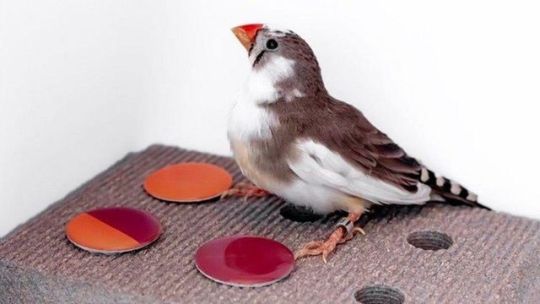
Songbirds Perceive Color In Categories Like People Do
Birds perceive colors in categories just like humans do: a recent study shows that zebra finches perceive red or orange, even when reality is a shade somewhere in between.
When you look at a rainbow, do you see bands of specific colors, or do you see a continuum of colors? Most people see distinct bands of colors, despite the fact that the rainbow itself is a continuum across the entire visible spectrum of color. Why do we see what isn’t there?
Considering the amount of information reaching our sensory organs every second, it could easily become overwhelming if we did not mentally categorize it. This color categorization is why we see bands of colors when we look at a rainbow. But does color categorization originate from a cultural or linguistic basis, or does it stem from an inherent biological basis?
Read More
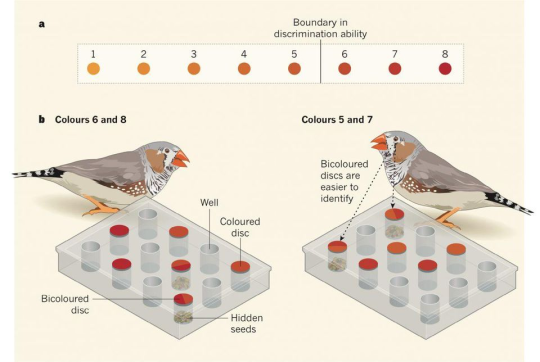
Reference List:
Eleanor M. Caves, Patrick A. Green, Matthew N. Zipple, Susan Peters, Sönke Johnsen and Stephen Nowicki (2018). Categorical perception of colour signals in a songbird, Nature, 9(4):968–980 | doi:10.1038/s41586-018-0377-7
Debi Roberson, Ian Davies, and Jules Davidoff (2000). Color categories are not universal: Replications and new evidence from a stone-age culture, Journal of Experimental Psychology, 129(3):369-398 | doi:10.1037/0096-3445.129.3.369Geoffrey
E. Hill (1990). Female house finches prefer colourful males: sexual selection for a condition-dependent trait, Animal Behaviour, 40(3):563-572 | doi:10.1016/S0003-3472(05)80537-8
Mirre J.P. Simons and Simon Verhulst (2011). Zebra finch females prefer males with redder bills independent of song rate -- a meta-analysis, Behavioral Ecology, 22(4):755–762 | doi:10.1093/beheco/arr043
T. R. Birkhead, F. Fletcher, and E. J. Pellatt (1998). Sexual selection in the zebra finch Taeniopygia guttata: condition, sex traits and immune capacity, Behavioral Ecology and Sociobiology, 44(3):179–191 | doi:10.1007/s002650050530
577 notes
·
View notes
Text


arhan is doing a semi-decent job with the coparenting. him and daniel certainly aren't a match made in heaven, but they raise adam well enough.
#simblr#ts2#the sims 2#sims 2#gameplay#hood: signal hill#signal hill 1.4#signal hill: fletcher#signal hill: arhan adler#signal hill: adam fletcher
31 notes
·
View notes
Link
via Politics – FiveThirtyEight
Former special counsel Robert Mueller gave short, clipped answers in front of two House committees last Wednesday, and he provided almost no new information about his investigation into the 2016 election and Russian interference during his testimony. But his appearance nonetheless seems to have bolstered the movement on Capitol Hill to impeach President Trump. Since Mueller testified, more than a dozen additional Democratic House members have come out in support of at least beginning a formal impeachment investigation. The total number of House Democrats favoring impeachment has reached about 109, according to lists from The New York Times and The Washington Post — nearly half of the 235-person Democratic caucus.1
In fact, it’s likely that there will soon be a pro-impeachment majority among House Democrats. A Democratic majority for impeachment is potentially (more on this in a moment) an important milestone in the months-long debate over exactly how Democrats should react to the Mueller’ Report, which included descriptions of a number of actions by Trump that could constitute obstruction of justice.
Why is a pro-impeachment majority likely? Because there are plenty of Democrats who have yet to come out for impeachment but who face similar political pressures to those who already have. The 109 Democrats who currently favor impeachment, not surprisingly, mostly represent very liberal districts; on average, Trump lost those districts in 2016 by about 38 percentage points. (Trump lost the average Democratic-held House district by 28 percentage points, and he lost the average district with a member not supporting impeachment yet by 20 points.) Of the 126 Democrats who are not yet on board with impeachment, 29 represent districts where Trump lost by at least 38 points. If just nine of those 29 embraced impeachment, the pro-impeachment wing of House Democrats would have a majority.
Impeachment holdouts in very blue districts
Democratic members who don’t support impeachment in districts that Hillary Clinton won by more than her margin in the average pro-impeachment district*
Name District Clinton’s Margin Nancy Pelosi CA-12 +78 John Lewis GA-5 +73 Gregory W. Meeks NY-5 +73 Hakeem Jeffries NY-8 +71 Frederica Wilson FL-24 +68 Alcee L. Hastings FL-20 +62 Eddie Bernice Johnson TX-30 +61 Jerrold Nadler NY-10 +60 Anthony Brown MD-4 +58 Elijah Cummings MD-7 +56 Albio Sires NJ-8 +54 Anna G. Eshoo CA-18 +53 Ro Khanna CA-17 +53 Hank Johnson GA-4 +53 Eliot Engel NY-16 +53 Zoe Lofgren CA-19 +51 Adam Schiff CA-28 +50 Marc Veasey TX-33 +49 Jimmy Panetta CA-20 +47 Sylvia R. Garcia TX-29 +46 Mike Thompson CA-5 +45 David Scott GA-13 +44 Brad Sherman CA-30 +43 Terri A. Sewell AL-7 +41 David Price NC-4 +40 Linda Sánchez CA-38 +40 Gerald E. Connolly VA-11 +39 J. Luis Correa CA-46 +38 Judy Chu CA-27 +38
*Clinton won pro-impeachment districts with an average of 37.6 percentage points.
Sources: The New York Times, the Washington Post
Those 29 members, representing such liberal districts, are likely to face some pressure to get on board. Polling suggests that while a majority of Americans oppose impeachment, a clear majority of Democrats favor it. In a congressional district where Trump lost by 38 percentage points, the sentiment is likely to be heavily in favor of impeachment.
It’s not that these House members will necessarily face primary challenges if they don’t join the impeachment push. But with the House now on a six-week recess, it’s likely that many of these members will be asked about impeachment by their constituents in their home districts, and I suspect few of them want to defend Trump’s conduct on the merits. So they are likely to suggest that impeachment will be both divisive to the country and relatively useless, since the Senate almost certainly will not remove Trump from office.
Some of these members can probably sustain an anti-impeachment position along those lines. But others will likely buckle and join the pro-impeachment push.
For now, though, those 29 members in heavily-Democratic districts who have not yet supported impeachment comprise an interesting group. Nearly all have at least one of three characteristics: They are black; they are from California; they are in Democratic leadership.
That members in leadership are holding out makes sense. As long as House Speaker Nancy Pelosi maintains that impeachment isn’t the best course, her leadership team is likely to hold that position. (Incidentally, Pelosi is the Democratic holdout in the most anti-Trump district — Trump lost there by 78 points.)
The California and black blocs present a more nuanced case. I suspect the California members, in particular, both respect Pelosi’s judgment that impeachment is politically unwise and may be holding off support for impeachment in deference to her. Many of the black members are close to Pelosi, as well. But I wonder if we are also seeing the same practical streak (Trump is not actually going to be removed) among Congressional Black Caucus members that we are seeing among black voters, who are embracing Joe Biden in part because they perceive other Democratic presidential candidates as less safe bets against Trump in a general election. Maybe a CBC member can convince his or her constituents, who are likely extremely opposed to Trump, that a failed impeachment process could help the president win a second term.
Whatever their rationales, I don’t think nearly all of these people can hold off on embracing impeachment. And there is another bloc of more than two dozen Democrats who are not yet in support of impeachment and represent slightly less blue districts where Clinton still won by at least 20 percentage points in 2016. These members don’t face any real electoral danger and are also in strongly liberal districts, so their constituents may push them to embrace impeachment.
What about the rest of the Democrats — those who aren’t in very liberal districts? Their behavior gives ammunition to both the anti- and pro-impeachment forces in the party. Broadly, this bloc is wary of impeachment, reinforcing the stance of Pelosi and the anti-impeachment group. Of the 64 Democrats who represent districts where Clinton won by 10 points or less (including districts won by Trump) just 14 members support impeachment. Only one (New Hampshire’s Chris Pappas) of the 31 House Democrats in districts won by Trump in 2016 supports starting the impeachment process.
Where Democrats in purple and red districts stand
Democratic House members in districts that Hillary Clinton either won by 10 percentage points or less or lost
Name District Supports Impeachment Clinton’s Margin Kathleen Rice NY-4 ✓ +10 Jennifer Wexton VA-10 +10 Dean Phillips MN-3 +9 Raul Ruiz CA-36 +9 Gil Cisneros CA-39 +9 Jason Crow CO-6 +9 Chrissy Houlahan PA-6 +9 Mike Levin CA-49 ✓ +8 Andy Levin MI-9 ✓ +8 Sean Casten IL-6 ✓ +7 Tim Ryan OH-13 ✓ +7 Jim Langevin RI-2 +7 Stephanie Murphy FL-7 +7 Katie Hill CA-25 +7 Thomas Suozzi NY-3 +6 Ann Kirkpatrick AZ-2 ✓ +5 Katie Porter CA-45 ✓ +5 Steven A. Horsford NV-4 +5 Daniel Kildee MI-5 ✓ +4 Jahana Hayes CT-5 +4 Kurt Schrader OR-5 +4 Kim Schrier WA-8 ✓ +3 Joe Courtney CT-2 +3 Charlie Crist FL-13 +3 Josh Harder CA-10 +3 Ann Kuster NH-2 ✓ +2 Harley Rouda CA-48 ✓ +2 Colin Allred TX-32 +2 Tom Malinowski NJ-7 ✓ +1 Sharice Davids KS-3 +1 Lizzie Pannill Fletcher TX-7 +1 Susan Wild PA-7 +1 Peter DeFazio OR-4 ✓ 0 Angie Craig MN-2 -1 Josh Gottheimer NJ-5 -1 Susie Lee NV-3 -1 Mikie Sherrill NJ-11 -1 Cheri Bustos IL-17 -1 Tom O’Halleran AZ-1 -1 Chris Pappas NH-1 ✓ -2 Lucy McBath GA-6 -2 Sean Patrick Maloney NY-18 -2 Conor Lamb PA-17 -3 Elaine Luria VA-2 -3 Haley Stevens MI-11 -4 Cindy Axne IA-3 -4 Abby Finkenauer IA-1 -4 David Loebsack IA-2 -4 Lauren Underwood IL-14 -4 Jeff Van Drew NJ-2 -5 Ron Kind WI-3 -5 Andy Kim NJ-3 -6 Elissa Slotkin MI-8 -7 Abigail Spanberger VA-7 -7 Antonio Delgado NY-19 -7 Ben McAdams UT-4 -7 Matt Cartwright PA-8 -10 Jared Golden ME-2 -10 Max N. Rose NY-11 -10 Xochitl Torres Small NM-2 -10 Joe Cunningham SC-1 -13 Kendra Horn OK-5 -13 Anthony Brindisi NY-22 -16 Collin C. Peterson MN-7 -31
Sources: New York Times, Washington Post
Democrats, in theory, should be concerned about protecting the members who are most essential to the party having a majority in the House. Their opposition to impeachment sends a strong signal about how they’re reading the politics in their home districts. Also, an impeachment resolution would not get the necessary 218 votes to pass without most of the 31 Democrats in Trump districts voting “yes” on it, assuming all Republicans stand with the president. A failed impeachment vote in the House, never mind the Senate, would be quite embarrassing for Democrats.
On the other hand, pro-impeachment members like New Jersey’s Tom Malinowski and California’s Katie Porter, who both won GOP-held districts in November, give the pro-impeachment forces in the party a valuable talking point: If Malinowski (Clinton won his district by just 1 percentage point) supports impeachment, why is New York’s Gregory Meeks (Clinton won by 73 points in his district) not on board? The pro-impeachment stance of members like Porter is part of the reason why I think more members in “safe” districts will be effectively forced to join her.
But here’s the thing: A majority of House Democrats being for impeachment doesn’t inherently mean anything. Even after that majority is reached, maybe Pelosi still keeps impeachment proceedings on ice. Maybe some of the pro-impeachment members know that they are taking a stand with no consequences, because Pelosi has assured them privately that she will stop impeachment from going forward no matter what.
At the same time, pro-impeachment sentiment, at least among Democrats, seems to be building. It’s easy to imagine that the dam has broken and that House Democrats, particularly those representing very liberal areas, feel like they can simply no longer defend their opposition to impeachment. If, say, 150 Democrats are for impeachment a month from now, watch out. Pelosi may not be able to sideline that big a pro-impeachment bloc.
4 notes
·
View notes
Photo

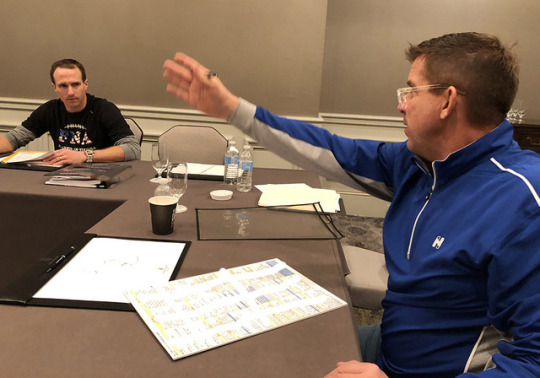
Embedded in New Orleans: The Ritz, the Rout and the Reason the Saints Are Unstoppable
NEW ORLEANS — “This is the first time in NFL history a play like this has been run from this formation! Ever!” jovial Saints coach Sean Payton called out to his offensive team Saturday night in a second-floor ballroom at the Ritz-Carlton on Canal Street. This was a man in love with his job.
The NFL’s state-of-the-art offense was doing a final walk-through in the Salon II ballroom before facing the Eagles on Sunday in the Superdome. (New Orleans embarrassed Philadelphia, 48-7, the worst loss ever by a defending Super Bowl champion.) Quite a sight, as the players lined up and walked/slow-jogged through the first 15 plays they planned to run. Alvin Kamara, wearing flip-flops, black socks and a red hoodie obscuring much of his face. Brees, in shorts, untied sneakers and a black T-shirt pumping his FNA co-ed flag football league.
Payton, in a blue pullover, playing defense.
Payton called out the name of Sunday’s bizarre play: “Q stop, G snug. Right empty. QB 38 Z Crush Alley.” On cue, Brees joined two wideouts to the left in a bunch formation (three receivers, snug to each other), while jack-of-all-trades-quarterback Taysom Hill joined the same type of bunch formation to the right.
Damndest thing I ever saw: Five linemen up front. Three receivers left, three receivers right.
No quarterback.
As instructed, Brees trailed two bigger wideouts on the left side of the formation. The coaches lined up as Eagle defensive players.
“I got Drew!” Payton said, crouching a bit across from the left bunch, like a press corner. “And don’t screw up the cadence, Taysom!”
The 11 offensive guys got set, and at the last minute, Hill motioned left to a shotgun position and called out the signals. Center Max Unger snapped it to him, and Hill powered right in a slow jog behind a slew of blockers. The play would be a power run, and it would fit into exactly what Payton told his players in this meeting: “Our emphasis in this game is to run at 22 [cornerback Sidney Jones]. He’s coming off a hamstring, and we don’t think he can hold up.”
No fooling around. All business, even on this weird play. Strange seeing football players practice at 30-percent speed in hoodies and jeans and whatever, with coaches playing Fletcher Cox and Malcolm Jenkins. After 15 minutes, each play run the same way, Payton said, “Let’s break it down,” and they gathered in a circle, said something I couldn’t understand, and the players went to team snack. (More than a snack, actually; it was a full-blown buffet meal.)
In the wide hallway outside Salon II, I asked Payton: “How’d you think of the double-bunch play?”
“Thursday night,” Payton said. “Just doodling. Just thinking. I just thought of it, and I said to the coaches, ‘Will this work?’ And [quarterbacks coach] Joe Lombardi said, ‘Why not? We can do anything we want.’ When I told Troy Aikman about it [in the FOX production meeting], he said, ‘Who’s getting the snap?’ I said, ‘No one. Yet.’ “
Payton thought for a minute, giving a John Nash look into the distance. “Part of it, really, is thinking of something that they [the Eagles] haven’t seen. That’s the job of a game-planner. You want eight heads to turn to [smart Eagles veteran safety] Malcolm Jenkins and be like, ‘What do we do?’ “
Payton took my notebook and drew out the formation. He said sometime later in the game, they’d reverse the call. It’d be Brees who’d go behind center at the last second and take a snap. Only this time it wouldn’t be a power run. Brees would throw it—maybe a quick stop route to the left, or a post from a receiver in the right bunch.
By that time, the players had all relocated to the ballroom with the food. Except for one player. That player was playing a grand piano—and playing it very, very well.
We looked over, and I asked Payton who it was.
“Austin Carr,” Payton said. “Wide receiver. President of his class at Northwestern. He’ll be the president of the United States when he retires.”
Carr played for a while, beautifully. I went over to ask him about playing.
“Just relieving some tension,” said Carr, talking while his fingers moved over the keys. He said he loves the music of John Legend. This music is what you’d hear from someone coming out of Juilliard.
“The song’s beautiful,” I said. “What’s it called?”
“I haven’t named it yet,” he said.
Lots of composers in this Saints group.
This is what I learned about the best offense in this offensively explosive period of football: It’s a more democratic group than I thought. This isn’t an autocratic Payton dictating plays. Drew Brees has a ton of input in plays he wants to run. Brees’ historically accurate season (he’s a 67-percent career passer, completing 77 percent this year) has a lot to do with his symbiotic relationship with Payton, and with both of them knowing what works best for an offense that’s quite complex. But it’s an offense they’ve nurtured and expanded since both came to the Saints in 2006. As Carr told me: “I can attest to the democratic process here. There’s an ethos of leaving your ego at the door. Lots of teams say that, but you don’t always see it. Sean’s OK when Drew says, ‘I don’t want to do that,’ and same with Drew about Sean. They’ve found the sweet spot in dealing with each other.”
I saw that in the final meeting of the night. More about that later.
First, let me explain what the night is like. It has six segments: a short all-coaches meeting, maybe 10 minutes; a 20-minute discussion about the first 15 plays Payton intends to call; a very short (maybe five to 10 minutes) all-team meeting, with a message mainly from Payton; the walk-through with the offense; the all-team snack (and, on this night, piano-playing); and finally, a meeting of about 40 minutes with Brees telling Payton, offensive coordinator Pete Carmichael and Lombardi what he likes and doesn’t like in the game plan.
The all-coaches meeting has a discussion of injuries and who will be active and inactive, and a message from Payton. Two things tonight: “We gotta run right at 22 [Jones] and we gotta throw at 22. We’re gonna make him defend the run on the first play. We’re going after him on three of the first eight plays.”
And then, a bit of a surprise. “We want to put the game on [Eagles quarterback Carson] Wentz,” Payton said. Payton likes Wentz as a player, but his player-personnel analyst, Ryan Herman, gives him trends and numbers every week, and Payton tells the group two interesting ones about Wentz, from Herman: The Eagles are 1-11 when Wentz plays and they allow more than 26 points. And he’s 0-9 when he passes for between 308 and 364 yards, the point being if he does that, the Eagles likely won’t be running the ball well, and the Saints feel they can beat a one-dimensional offense.
Then the defensive coaches left to work on their own, and the offensive coaches work on the opening plays. On the screen, Payton’s opening plays come up … and the double-bunch is number five. Clearly, it’s going to be called early in the game. Payton wants to see the big-bodied Hill steaming around right end at number 22. (He never calls him “Sidney Jones.” Just “22.”) For a stranger who doesn’t know the Saints’ vernacular, listening to the discussion of each play is like listening to Dutch. One of the reasons Payton isn’t paranoid about me sitting in, I’m sure, is that when I hear, “Snug left, Y fly, P 35 Stab dog F rail,” I’m not going to know what it means—and that’s just the way they like it.
“Ball security in this game is everything,” Payton said. “They’ve got a great front. They’ll come after us. They have to win this game. Let’s go win another one.
“Because it’s the next one.”
Then the short team meeting with the message, again, about 22. Then the defensive players leave to move next door to have their own meeting. Then everyone in the room, coaches and offensive players, pick up the conference-room chairs and stack them by either side of the room, to make room for the walk-through. This walk-through is a test, to see if every player can remember his job on every play (and for 15 straight plays, there are no mental errors, only the warning from Payton to Hill about his cadence).
One interesting thing: Players are drilled in the precision of spacing, and who is on the line and who is off a step. So several times, Michael Thomas lined up wide left, on the line, and almost reflexively waved his hand to the receiver to his left, as if to say, ‘Get a step back.’ One of the coaches told me the receivers take care of each other like that.
Then the snack. In the big room with stations scattered throughout, Payton gets spaghetti and explains the week and the importance of continuing to mine information. “This year, because of Taysom’s development, we talk a lot during the week about how to use Taysom,’’ he said, digging into what for him is dinner, not a snack. “But we meet late most nights during the week. I want to go over everything. I want to see it, write it, feel it, discuss it. Last night, I put on the Football Life with Mike Holmgren. He used to be a third-grade teacher, and I think that’s great training for what we do. We gotta put a plan together with who is in the building—not with who we wish was in the building. We gotta evolve with who we have.”
R and D is big in the job. “I look at the league a lot,” Payton said. “I look at all the scoring plays every week. I look at [Bill] Belichick and New England. I look at Sean McVay. I found a good one last night. I hadn’t watched all of New England’s offensive plays in the Super Bowl against Philadelphia in a while, and so last night, I put the tape on and I found something. Gronk [tight end Rob Gronkowski] caught a ball inside the 10 and scored, but it’s how he caught it. It was like catching an inbounds pass, using your body to keep the defender off you. That’s perfect for us. I told Mike Thomas, ‘This is a touchdown.’ We practiced it today. I think we’ll use it.”
By 9:55, Brees and his coaches sit back in LaSalle, and now it’s Brees’ turn to weigh in on the game plan. Payton has approximately 18 sections of the game plan: play-action, screens, quarterback-movement plays, empty-backfield, two-minute, and more. All the men in the room have a copy of the play sheet. Payton asks Brees, for instance, “Red zone, 20 to the 11, what do you got?” In other words, “What do you want me to call?” To each section, Brees said between one and six plays. In this section, for instance, he said six plays. Payton, using a black Sharpie, placed a dot on each play Brees liked and wanted called.
And it was the way Brees said the plays. Deliberately, with reasoning when need be. Like: “22 paint Y shock, X Harvey.” Four or five seconds to look at the next play and envision it. Then onto the others. “52 Z Hank.” And more.
In the tight Red Zone category (5-yard line to the 3) Payton asked Brees, “How are you with Bloodhound 21?” Good, Brees said. Payton liked this—it was a way to take advantage of a young and inexperienced secondary, calling the play quickly and using fast tempo to rush to the line while the defense might be swimming.
At 10:37, Brees was done with his recommendations. There’d been, by my count, 46 of them. One would pay dividends early in Sunday’s game.
After the meeting, Payton and Brees sat with me to discuss imagination and their bond. “The evolution from where we were, call it 13 years ago, when we all first got here in ’06 to now, is pretty amazing” Brees said. “It’s an exciting process. It’s a bit nerve-wracking early in the week I think because you’re sitting there watching film after film and you’re trying to identify all the ways that you can attack that defense, right? I think some of our best ideas at times come on a Saturday or Saturday night, or even Sunday morning.”
Said Payton: “This week, it started with me drawing it on the board saying, what if we just lined up with no quarterback and one of the two of them came back depending on the play. Part of the install sometimes is to have some fun and have some levity with something like that. The first day we’re doing it in walk through. Max [Unger, the center] turns around. There’s no one to snap to. Drew and Taysom are kinda looking at each other like, is it me? Or is it you? And—
Brees interrupted: “Rock, paper, scissors.”
There’s Brees, finishing Payton’s sentence.
4 notes
·
View notes
Text
New Concepts Into Minecraft Launcher By No Means Before Revealed
Now, click on on the Apps & options option.3. Now, from the appeared choices, press the Signal out option.3. Check it out now. Therefore, to repair the error, examine the date & time settings and if the setting is wrong, modify it accordingly. Listed here are the strategies that you would be able to try to fix the error code 0x803f8001 on Minecraft Launcher on Home windows Laptop:1. Listed here are the attainable causes due to which you would possibly encounter the error code 0x803f8001 on Minecraft Launcher:- This error can occur in case you are using an outdated Windows system. Before mentioning the fixes, allow us to attempt to perceive the eventualities which can set off the error code 0x803f8001 on Minecraft Launcher.What causes error code 0x803f8001 on Minecraft Launcher? Subsequent, look forward to the process to complete and when accomplished, attempt relaunching Minecraft and see if the error is mounted or not. It took ages, however Minecraft Earth is lastly out there on Microsoft's house soil.
I've seen a variety of home movies, and i've seen lots of stuff about him as well. And so that you at all times acquired to maintain searching for those good days are gonna come back, as a result of a lot of individuals are lost in the clouds right now. You simply bought to keep wanting ahead to what you may presumably do tomorrow. This can mark the final big effort to maintain those editions updated with our newer variations of the sport,' Mojang mentioned in a post on their webpage. Judging by its predecessors, The Witcher 3: The Wild Hunt will most likely be a prolonged adventure. As we move towards a fifth 12 months, it's going to hopefully be something we will sneak in at some stage. In short: Apple calls for app developers use its cost processing every time promoting in-app digital items, like a brand new look for a Fortnite character or a celebratory dance transfer to carry out after a win. Note: You'll be able to move the items you need to your merchandise bar, or choose the survival stock tab to position them in your personal stock.
Folks have also made it their full-time passion to make fascinating Minecraft Survival Servers and earn thereof. One does not must be a tech knowledgeable at creating a Minecraft server for minting money. So, create a catchy, stimulating, and pleasing server so that there is heavy demand in your server among the many millions of energetic Minecraft gamers. The machines also do the heavy loaded works simply. Keith has acquired many messages from different parents of autistic children who have tried taking part in Minecraft with them and found the outcomes astonishing. So, modify the date & time settings in your Laptop accordingly and see if the error is fixed.- The corrupted set up of Minecraft Launcher can also set off the identical error. The error could be precipitated due to corrupted or incomplete set up of Minecraft Launcher. Hence, be sure that you've installed all of the pending Home windows updates in your system.- It can be triggered because of some temporary glitch on your Pc. But SRAZY'S BLOG is only as a result of I haven't got an excellent controller for my computer. Joel additionally tell us that he is concerned with a new app based on the TouchOSC open sound controller app, and that he won't cease utilizing gadgets in his performances any time quickly.
Fernando Diaz, a senior researcher in the brand new York lab engaged on the project, stated the goal is the let the character learn instead of programming it to accomplish particular duties. JC Fletcher (@jcfletcher):Working on Silent Hill: Ebook of Recollections and Professor Layton and the Mask of Miracle for review, so I can then get again to Derrick the Deathfin, Retro City Rampage, Denpa Males, Monster World IV, Double Dragon Neon, Nights, and Tokyo Jungle. In multiple situations, dangerous cache related to the Microsoft Store app can forestall apps from working as intended and throw up such errors. After that, reboot your Laptop and begin the Microsoft Store app.4. After that, check whether or not the error is resolved. After that, click on the Uninstall possibility and confirm the uninstallation of the app.5. Go-to option for numerous gamers. Nonetheless, even Salsamendi was not expecting the approach - in a recent interview with Geekwire, when asked if he would you fairly have Gates, Zuckerberg or Bezos in your corner, he answered: 'Zuckerberg, arms down. Should you threw a bunch of gaming catchwords in a hat after which pulled them out one by one and put them so as, you might have an approximate description for the upcoming Deepworld.
1 note
·
View note
Text
RIAS Awards 2021 Winners: Buildings
RIAS Awards 2021 Winners, Scotland Buildings News, Architects Shortlist, Jury
RIAS Awards 2021 Winners
Scottish Architecture Prize News: Winning Buildings + Architects in Scotland
2 September 2021
RIAS Awards Winners in 2021
Scotland’s national architecture awards – RIAS announces its buildings of the year
RIAS Awards in 2021 Winning Buildings
2nd of September 2021 – Fourteen outstanding new Scottish buildings have been named today as winners of Scotland’s national architecture awards by the Royal Incorporation of Architects in Scotland (RIAS).
As well as exemplary new housing, education and healthcare facilities, this year’s RIAS Awards winners include a new training centre for Scotland’s sporting champions, a temporary museum housing a Charles Rennie Mackintosh masterpiece, and a moveable microhome on the Isle of Skye.
The 2021 RIAS Awards winners are:
Aberdeen Art Gallery, Aberdeen by Hoskins Architects
photo © Dapple Photography
Aberdeen Art Gallery
A decade-long redevelopment project, delivering major new exhibition and education spaces, a complete renewal of servicing and environmental control systems, as well as improved art handling, storage, back of house and study facilities. The special character of the original spaces is preserved, while a dramatic new rooftop extension signals the gallery’s renewal to the city.
Altarf, Isle of Skye by Ann Nisbet Studio
photo : David Barber
This moveable one-bedroom home emulates the form and proportions of traditional highland rural houses, and was developed as a prototype lightweight and thermally efficient house for a rural landscape. Its three open light-filled rooms flow into each other, and feature deep storage to make clever use of the limited space. Designed to be beautiful while also being practical and sustainable, the re-use and maintenance of this project were paramount to its creation.
An Cala, Sutherland by Mary Arnold-Forster Architects
photo : David Barber
This two-bedroom micro-home was designed to fit on a fixed grid that related to the size of a lorry, with its 13 modules constructed offsite, transported up a single track lane and erected in four days on a site facing Loch Nedd. The robust house can face all weathers and requires no heating apart from a small wood burner.
Bayes Centre, Edinburgh by Bennetts Associates
photo : Keith Hunter
Bayes Centre
Edinburgh University’s new building the final phase of a redevelopment programme commenced in 2003. This is a building for research, business and learning, designed to enable collaboration between different users in the data industry, and a place to linger and exchange ideas.
Dunira Street Housing, Glasgow by Elder & Cannon Architects
This development of 71 homes is part of a larger regeneration programme in Glasgow, and provides a wide variety of homes, including accessible flats and houses. Elder & Cannon Architects have reinstated a perimeter ‘tenement’ block, carefully balancing private amenity space and an improved public realm.
Edinburgh Printmakers, Edinburgh by Page\Park Architects
The only surviving structure from the Castle Mills industrial complex – where almost 2 million pairs of rubber boots were made for the British Army in World War One- is now a new creative hub, thanks the redevelopment of a derelict listed derelict building into a welcoming multi-use arts complex.
The Egg Shed, Ardrishaig by Oliver Chapman Architects
The aim of this modest building was to improve the built environment of Ardrishaig’s waterfront and increase the tourist offer within the village. The Egg Shed provides a new destination for learning about the rich heritage of the area alongside facilities for both visitors and local residents. Using flood resistant materials this easily visible project builds upon Scottish Canals’ existing facilities to allow story-telling and tourism to flourish.
The Hill House Box, Helensburgh by Carmody Groarke
A radical approach to conservation sees the creation of a demountable structure and walkway encasing Charles Rennie Mackintosh’s Grade A listed masterpiece, in a hybridisation of tradition and intervention. The Hill House Box provides an environment for the building to dry out from prolonged water damage, alongside visitor facilities allowing people to see its conservation at close quarters.
King’s Stables Road, Edinburgh by Fletcher Joseph Associates
This mix of private and rented accommodation (including student flats and a hotel) transforms a former council depot into a lively, attractive environment. Its muted palette of traditional materials blends into the existing fabric of the Old Town, and the improved public realm is now linked to historic closes with views to and from Edinburgh Castle.
Kyle House, Sutherland by Groves-Raines Architects Studios Ltd.
Believed to have been built using stones from the nearby Dun Mhaigh Iron Age broch, this nineteenth century unlisted building has been brought back to life as a place for guests to spend time in a beautiful Sutherland landscape. Groves-Raines Architects’ restoration and refurbishment has introduced subtle yet significant contemporary interventions to the exterior, and a series of highly refined, almost monastic interiors within.
Maidenhill Primary School and Nursery, Newton Mearns by BDP
Sitting in the heart of a brand new 800 house development, this school provides a variety of flexible spaces for learning arranged around a central atrium ‘heart’. A restrained palette of colours creates a comforting background to learning, and a thoughtful relationship with the surrounding landscape gives pupils space to explore.
Maryhill Locks, Maryhill by jmarchitects
Maryhill Locks reinterprets the traditional terrace to create 33 flexible and sustainable homes for young professionals and families, close to Glasgow city centre. Brick enclosures at the front cleverly conceal bins and cars, a linking footpath behind the rear gardens is a safe shared space for young children to play, and a hidden allotment sits at the heart of the scheme.
The Prince & Princess of Wales Hospice, Glasgow by Ryder Architecture
This innovative and welcoming building and landscape puts patients first, and is the first hospice in the UK to follow the Scandinavian-inspired ‘Sengetun’ model of care which puts placemaking at its heart. The hospice creates light-filled and familiar places that look and feel like home, with medical assistance sitting firmly in the background.
sportscotland National Sports Training Centre Inverclyde by Reiach and Hall Architects
Designed as the UK’s first fully inclusive residential sports facility, this project boasts impressive sports training facilities alongside flexible and adaptable space for accommodation, learning, meeting and offices, with a ribbon-like design that weaves across the landscape. Athletes who have trained here include several Scottish Paralympians – currently seeking glory in Tokyo.
The RIAS Awards demonstrate the quality and breadth of architectural endeavour in Scotland. All types and sizes of architectural projects can win a RIAS Award, as the list of 2021 awards winners demonstrates. Buildings are assessed by an expert jury who look at each project’s architectural integrity, usability and context, delivery and execution, and sustainability.
The winners of the RIAS Awards will become the ‘longlist’ for the RIAS Andrew Doolan Best Building in Scotland Award. The shortlist for the 2021 Andrew Doolan Award will be announced on 30 September, with the winner announced on 30 November.
RIAS President Christina Gaiger PRAIS said:
“The Covid-19 pandemic has highlighted the importance of our built environment to individuals and communities, and the RIAS Awards are a moment to pause and celebrate the incredible difference that architects are making across the country. This year’s RIAS Awards demonstrate the critical role architecture can play – whether that is delivering better homes and public services, addressing climate change, celebrating our shared culture and heritage, or simply giving moments of real delight. There is a real breadth in this year’s clutch of RIAS Awards, and each of them is a very worthy winner.”
For more information about the winners of the 2021 RIAS Awards visit www.rias.org.uk.
-Ends-
Notes to editors
High resolution images are available to download here.
Christina Gaiger PRIAS (RIAS President) is available for interview.
The Royal Incorporation of Architects in Scotland (RIAS) was founded in 1916 as the professional body for all chartered architects in Scotland and is the foremost institute in the country dealing with architecture and the built environment. A champion of architecture and the built environment in Scotland, the RIAS supports the interests of its growing membership, united through its six regional Chapters, to promote the importance of well-designed buildings and places.
The jury for the 2021 RIAS Awards comprised Professor Robin Webster OBE (past president of the RIAS and jury chair), Brian McGinlay (McGinlay Bell Architects), Ann Allen (chair, Architecture and Design Scotland and CEO, Chartered Institution of Civil Engineering Surveyors. The jury were assisted by former RIAS trustees Catriona Hill (Oberlanders/CH Architecture) and Neil Ferguson (Neil Ferguson Chartered Architect) with visits to the more rural projects.
www.rias.org.uk
Twitter: @RIASmembership
Instagram: @riasmembership
Facebook: RIASmembership
RIAS Awards 2021 Winners information from RIAS 020921
RIBA Awards in 2017
RIAS Awards Winners in 2017
• City of Glasgow College by Reiach and Hall Architects and Michael Laird Architects – Cathedral Street, Glasgow, Scotland – Further education college
City of Glasgow College Building + City of Glasgow College – City Campus
• Newhouse of Auchengee by Ann Nisbet Studio – Meikle Auchengree, North Ayrshire, Scotland – Individual house
photo © David Barbour
Newhouse of Auchengee
• Rockvilla by Hoskins Architects – Speirs Wharf, Glasgow, Scotland – Workspace/office
photo from architects
Rockvilla in Glasgow
RIAS Awards 2016 Winners
RIAS Awards 2016 Winners News
The Pyramid Viewpoint, Dunbartonshire
BTE Architecture
photo @ Andrew Lee
The Pyramid Viewpoint on Loch Lomond
The British Golf Museum and Café, St Andrews
Richard Murphy Architects
image from architect
British Golf Museum and Café
City of Glasgow College, Riverside Campus, Glasgow
Michael Laird Architects / Reiach and Hall Architects
image from architect
New Glasgow City College
Helensburgh Town Centre Public Realm, Helensburgh
Austin-Smith:Lord LLP
Helensburgh Town Centre Public Realm
Location: Scotland, UK
Architecture in Scotland
Contemporary Scottish Architecture
Scottish Architecture Designs – chronological list
Scottish Architecture News
RIBA Awards
RIAS Andrew Doolan Best Building in Scotland Award Winner
West Burn Lane, St Andrews
Design: Sutherland Hussey Harris
photo © Keith Hunter
West Burn Lane
Scottish Architecture
Scottish Architect
Comments / photos for the RIAS Awards 2021 Winners page welcome
The post RIAS Awards 2021 Winners: Buildings appeared first on e-architect.
0 notes
Text
Makao Bora
New Post has been published on http://www.makaobora.co.ke/product/the-hound-of-the-baskervilles-by-arthur-conan-doyle-ebook-audio/
The Hound of the Baskervilles by Arthur Conan Doyle [ebook & audio]

We owe The Hound of the Baskervilles (1902) to Arthur Conan Doyle’s good friend Fletcher “Bobbles” Robinson, who took him to visit some scary English moors and prehistoric ruins, and told him marvelous local legends about escaped prisoners and a 17th-century aristocrat who fell afoul of the family dog. Doyle transmogrified the legend: generations ago, a hound of hell tore out the throat of devilish Hugo Baskerville on the moonlit moor. Poor, accursed Baskerville Hall now has another mysterious death: that of Sir Charles Baskerville. Could the culprit somehow be mixed up with secretive servant Barrymore, history-obsessed Dr. Frankland, butterfly-chasing Stapleton, or Selden, the Notting Hill murderer at large? Someone’s been signaling with candles from the mansion’s windows. Nor can supernatural forces be ruled out. Can Dr. Watson–left alone by Sherlock Holmes to sleuth in fear for much of the novel–save the next Baskerville, Sir Henry, from the hound’s fangs?
Many Holmes fans prefer Doyle’s complete short stories, but their clockwork logic doesn’t match the author’s boast about this novel: it’s “a real Creeper!” What distinguishes this particular Hound is its fulfillment of Doyle’s great debt to Edgar Allan Poe–it’s full of ancient woe, low moans, a Grimpen Mire that sucks ponies to Dostoyevskian deaths, and locals digging up Neolithic skulls without next-of-kins’ consent. “The longer one stays here the more does the spirit of the moor sink into one’s soul,” Watson realizes. “Rank reeds and lush, slimy water-plants sent an odour of decay … while a false step plunged us more than once thigh-deep into the dark, quivering mire, which shook for yards in soft undulations around our feet … it was as if some malignant hand was tugging us down into those obscene depths.” Read on–but, reader, watch your step! –Tim Appelo
.fb_iframe_widget_fluid_desktop iframe width: 100% !important;
1 note
·
View note